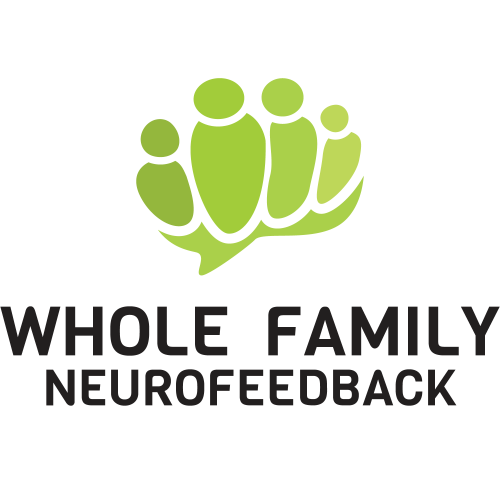Can at-home neurofeedback help improve attention and focus? Managing life with one or more children with ADHD isn’t easy. Even with all of your supports in place, you can’t help but wonder if there are still improvements you can make. So many families find that traditional supports only take them so far. If you’ve found yourself searching for ways to manage life with ADHD for your family, you’re not alone. There is a lot of information out there on natural, non-invasive ways to help kids who have ADHD. Non-linear neurofeedback is one of them.
Maybe you’ve come across neurofeedback but you’re not sure what it is. You’re wondering how it can help:
- Increase focus and mental acuity…..which can lead to improved grades?
- Your child be more calm and relaxed about homework….so they’re more willing to do it?
- Your child be more willing to complete mundane tasks…..like cleaning their room?
For some people, neurofeedback helps with all of this.
Today, we’re going to discuss how NeurOptimal® neurofeedback can help your child living with ADHD and share how it helped one family get their child to prioritize homework and have his best semester yet.
Can At-Home Neurofeedback Help Kids Who Have ADHD?
NeurOptimal® neurofeedback is the first at home neurofeedback device. Although it does not cure or treat any medical or mental health diagnosis, people do find it has many benefits that help them manage their lives with ADHD.
People with ADHD often report that NeurOptimal at-home neurofeedback helps:
- Promote healthy sleep habits
- Promotes relaxation and stress management
- Helps improve mental acuity and focus
- Helps them become more flexible which makes what they’re dealing with easier
The best part about NeurOptimal® is that it can be done at home, which is great for kids. You can have your child do it while they are watching a movie or listening to music. That’s one less appointment you have to make.
If you’ve tried traditional regimens but there are still a few things you want to work on, neurofeedback might be able to help. Since neurofeedback promotes relaxation, healthy sleep habits, and mental acuity, many people find improving these areas can improve many different areas of their lives. The best part is that you don’t have to abandon any other treatments, regimens, or therapies you’re doing. NeurOptimal® can actually help you participate more in those as well.
Let’s see how neurofeedback helped one teenager who has ADHD improve mental acuity and focus better in school.
How NeurOptimal® Helped Brooke’s Family
Brooke, a mother of two boys, decided to try neurofeedback because her oldest child has ADHD and she wanted to try something different.
Her son was struggling with:
- Simply sitting at a desk
- Focus and attention at school
- Completing homework assignments
While trying to manage life with ADHD, Brooke’s son was still struggling with doing his homework so she thought it was time to try something different. Before neurofeedback, she says his backpack never left their mud room and homework was never done. Before this school year started, she rented a neurofeedback system to see if it could help.
In just 20 sessions, Brooke saw some significant improvements in her son with ADHD. She noticed he was more active and even joined a gym. When school started he was completing his homework and cleaning his room! His report card improved and he had his best semester yet! Brooke says there was a lot of positive feedback at the parent-teacher conference.
At home neurofeedback helped Brooke’s son to be able to improve in areas that were holding him back. Not only did it help him but it helped the whole family.
How Neurofeedback Helped The Whole Family
Brooke was already familiar with neurofeedback which made her decision to start really easy. She rented a system so everyone in the family had access to it. Brooke did 30 sessions and reported her sleep was better and she was not waking up as frequently (which was a big problem for her).
After doing neurofeedback she was finally motivated to tackle a project she was procrastinating on. Overall she feels neurofeedback helped her gain more clarity and better memory recall – she doesn’t fumble on her words as much.
Brooke’s husband who deals with anxiety did report improved sleep with neurofeedback and more feelings of relaxation.
Brooke’s youngest, a 10-year-old boy also did it and felt so relaxed while doing it, he asked for sessions every night.
Brooke’s advice to families who might be considering neurofeedback is to get all of your questions answered so you feel comfortable with it and know what to expect. Also, if you want to try it on your child but you’re unsure about it, she suggests you try it for yourself. Once you see how it can help and you’re comfortable with the process, you’ll feel more confident and willing to have your kids try it.
In Brooke’s experience, another benefit of having kids do neurofeedback is that it helps them be more independent, take ownership in helping themselves, and become more self-aware. By having them participate in neurofeedback, they are active in helping themselves. Doing neurofeedback encourages them to pay attention to any changes in their body. It can help them become more self-aware as they notice the improvements in things like sleep, relaxation, and focus.
How Does NeurOptiomal® Work?
If you’re not familiar with NeurOptimal®, you might be wondering how it works. Let’s talk a little bit about the technical side of it.
NeurOptimal® works by encouraging the brain to develop healthier patterns and train your brain for better functioning. First, it monitors the electrical activity of the brain via sensors on the scalp and ears while you’re listening to music or watching a movie. Once the unit detects turbulence – or unpleasant patterns – it gives the brain a signal.
This signal is simply a brief interruption in what you’re listening to. The signal helps you self-regulate or tap into your brain’s ability to find optimal functioning.
NeurOptimal® simply just gives your brain a signal (in the form of a brief interruption) so that it can find more efficient pathways and correct on its own.
Using neurofeedback is like holding a mirror up to your brain. The brain gets information about itself and uses it to bring you back to the present moment.
The best thing about NeurOptimal® is that the sessions are unique to the user. Everyone’s experience with turbulence is different and therefore, each neurofeedback session is tailored to what you need.
Want To Learn More About At-Home Neurofeedback?
If your family is managing life with ADHD and you’re looking for more support or to learn about how neurofeedback can help, you can join our Facebook group, Neurofeedback Moms (Dads are welcome too!)
We have a great community of parents learning about neurofeedback and sharing their personal experiences.
In the group you’ll get:
- Research-based information to help you make the best decisions for your family
- Live sessions with experts in the therapeutic, neurofeedback, and parenting fields
- Lifetime access to all live recordings – watch at your convenience!
- All of your questions answered
- Support when you need it!
If you want to know how neurofeedback can help your child manage life with ADHD, join Neurofeedback Moms.
We’re excited to connect with you inside of the group!

